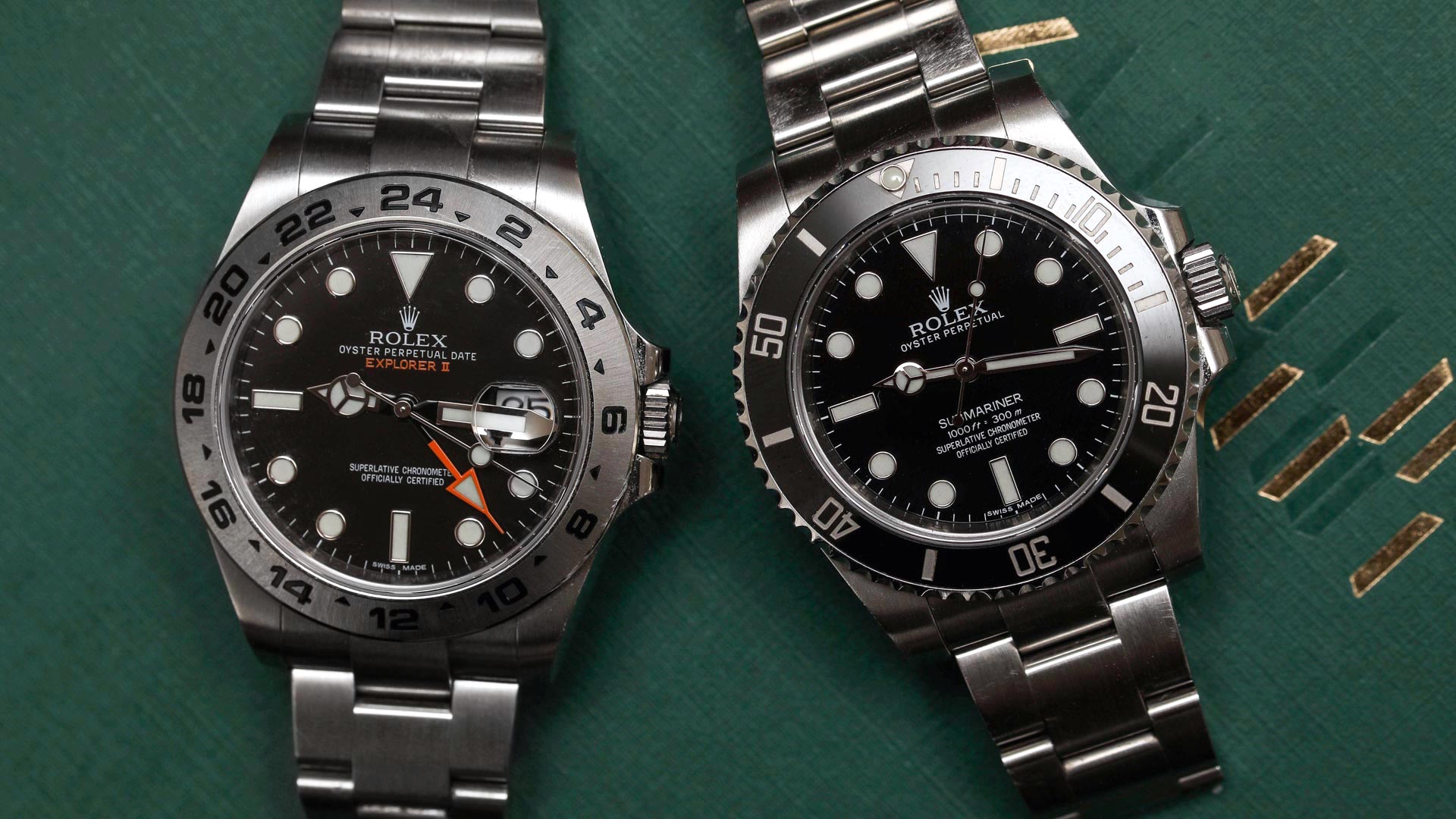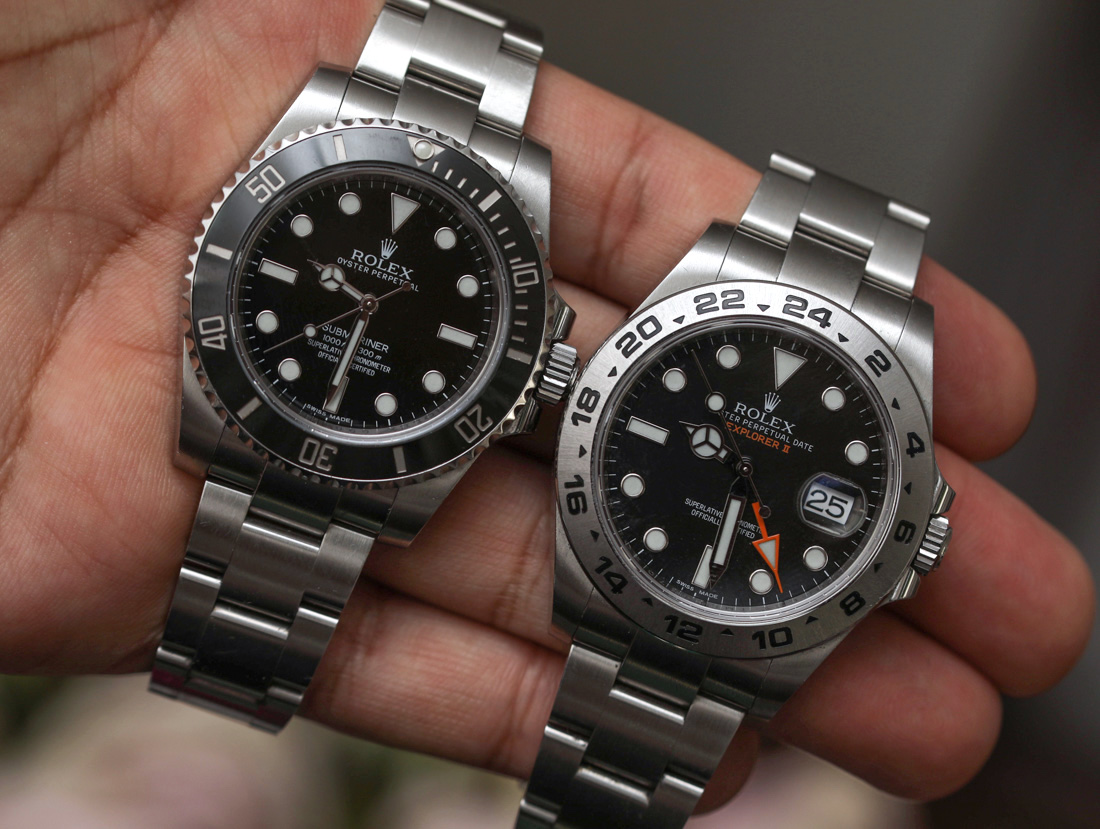
It was back in mid-November 2016 when, for no reason at all of course, I decided that I needed some retail therapy to help me get out of the inexplicably dark mood I was in. So, what does a watch lover do when they need retail therapy? Go Rolex shopping, of course. After consulting with all my aBlogtoWatch and fellow enthusiast buddies, I was down to two options: a Rolex Explorer II Ref. 216570 black dial or the ubiquitous Rolex Submariner Ref. 114060 no date (if I could get an Explorer II with no date, I’d likely have opted for that).
I’m not going to keep the mystery going here, but after I made my decision I talked to one of the consummate watch professionals whom I entrust for purchases, George Mayer over at Govberg Jewelers. Shortly after that I had my Explorer II on the wrist and I couldn’t be happier. However, the decision was tougher than I had imagined and, in an ideal world, I would have gotten both the Explorer II and the Submariner. Here, I’m going to attempt to objectively compare the two watches to help make this decision a little easier for anyone out there struggling with the same choice.
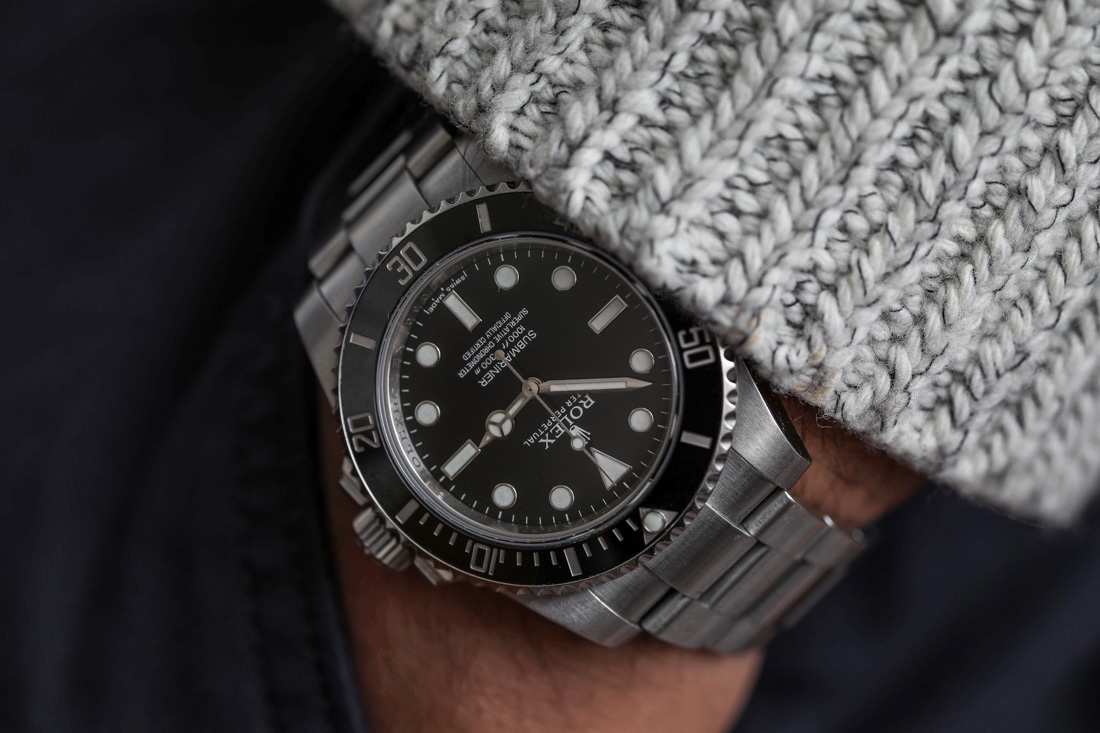
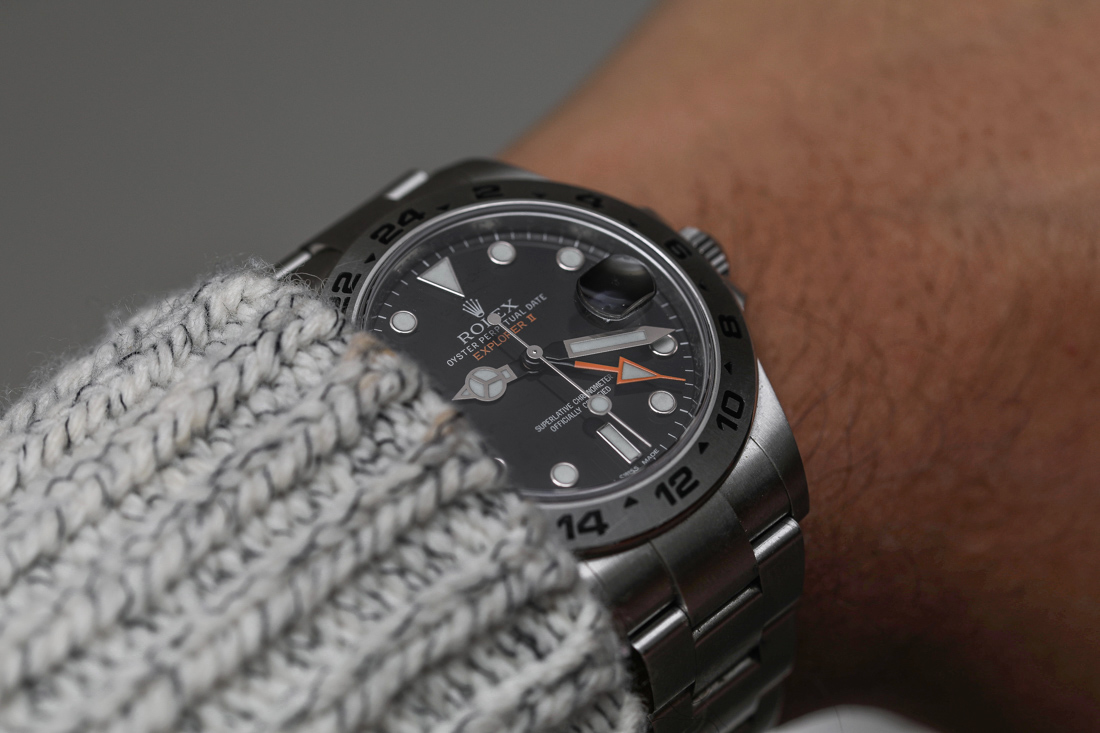
It’s no secret that steel sports watches are the “it” pieces at the moment (writing this in early 2018, for posterity) with ceramic Daytonas and Patek Philippe Nautilus 5711s trading at thousands of dollars above their asking prices. This is a topic of justified frustration from a lot of watch enthusiasts who simply want to pay a fair price for a watch they want but unfortunately market trends and inventory can make getting some models nearly impossible, and the recently introduced steel Pepsi GMT is going to be another impossible to find model trading at way above retail.
Fortunately, the Submariner and Explorer II are solid offerings that retain value but are reasonably easy to acquire. However, Rolex is constricting inventory more and more and an inevitable price increase down the road makes this a good time to pull the trigger on one of these pieces if you’ve seriously been considering it. (If you want to learn more about the inventory crunch, aBlogtoWatch had a fascinating and illuminating conversation with George Mayer from Govberg about this topic that you can check out here.)
Some time ago, our David Bredan did a head-to-head of the Submariner 114060 and the Tudor Heritage Black Bay. This is a little different as there isn’t one solid value proposition, but I will cite David’s piece throughout this article when it comes to the Submariner. So, without further ado let’s take a look at the Rolex Submariner 114060 vs. the Rolex Explorer II 216570.
Rolex Submariner History & Background
The first Submariner ref. 6204 watch arrived in 1953 and has gone on to become the most iconic dive watch in modern history, and one of the most iconic and ubiquitous luxury sports watches out there, period. Originally measuring 37mm wide, the Submariner was waterproof to 100 meters due to its Oyster case though in subsequent years this was improved to 200 meters (1,000 feet) of water resistance. Of course, when Sean Connery wore the Submariner as James Bond in 1962’s Dr. No, the watch was chiseled into the imagination of nearly every young man (and woman) who saw a 007 film through the years.
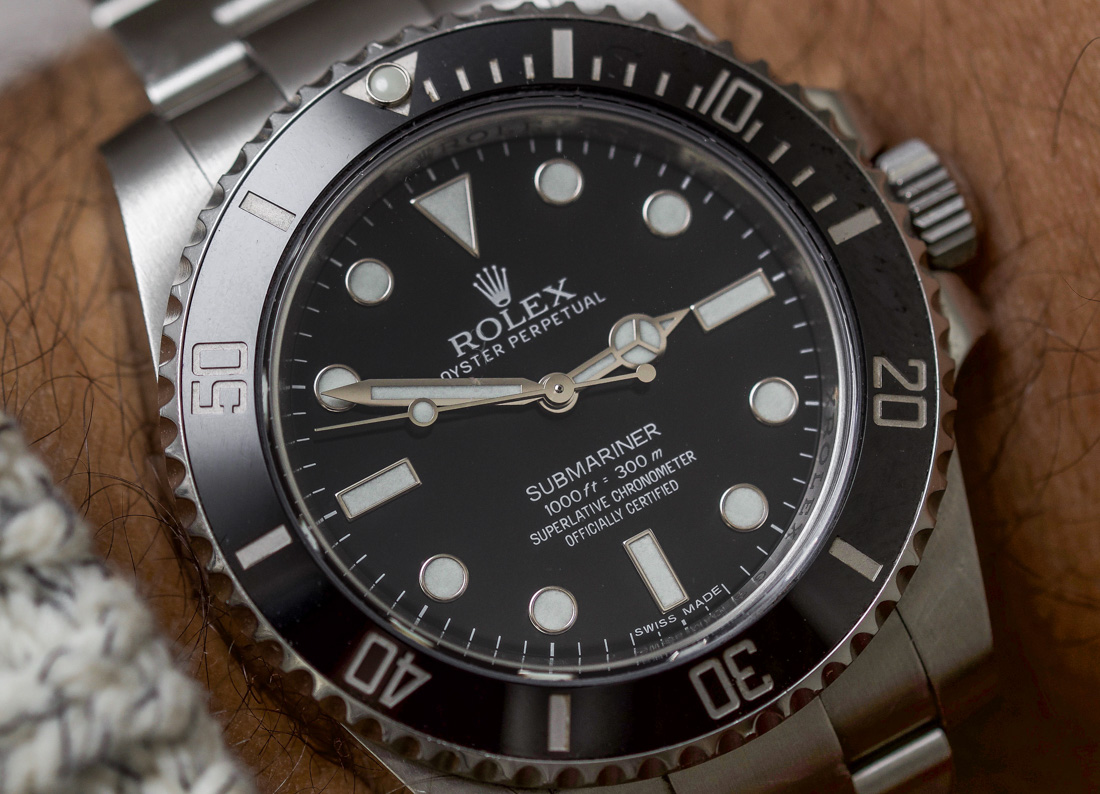

Fast forward to 1967, and we see the release of the Rolex Submariner ref. 1680 which was the first Submariner that had a date, as well as the single line of red text which was given a tribute in the form of 2017’s Sea-Dweller which isn’t a faithful recreation, mind you.
The Submariner has been an icon for decades, and the two most common models we see are the reference 16610 with aluminum bezel which was introduced back in 1989 and was in production until 2010. In 2010 we saw the introduction of the Submariner we are discussing here in the ref. 114060 as well as the date model ref. 116610. Updates that were made to the newer versions were: the most obvious inclusion of the Cerachrom (that’s ceramic) bezel; superior Chromalight lume; the addition of four click-springs used in the bezel (the previous 16610 used one click-spring) which allows for a smoother and more accurate setting on the bezel; the upgraded caliber 3135 which uses the Parachrom hairspring; and finally the newer models have larger crown guards and lugs.

Famous for his GMT, Fidel Castro also wore his Submariner. Here, he famously is wearing both a Day-Date and a Submariner on a visit to the then-USSR.
In short, the Submariner is a modern legend. A quick glance at the second-hand or watch trade forums show how strong this watch and its reputation are. If you want a piece of history that can be traded anywhere on the planet in a split second, it’s hard to do better than the Submariner. Of course this universal appeal and reputation means that this watch is not going to make one feel “unique” in a crowd and it’s pretty tough to express your taste or style with a watch like this.
Rolex Explorer II History & Background
The Explorer II was introduced in 1971 as a sportier follow up to the Explorer. Never quite living up to the popularity of models like the Submariner or GMT Master II, I think the Explorer II has marched to the beat of its own drum since it was introduced and really has stood alone in the brand family. Much like the Milgauss, it’s a relatively quirky offering that has added so much character to the brand’s lineup. And it’s impossible to discuss neither the first Explorer II or the most recent model that I’m discussing here without pointing out that impossible-to-miss orange 24-hour hand.
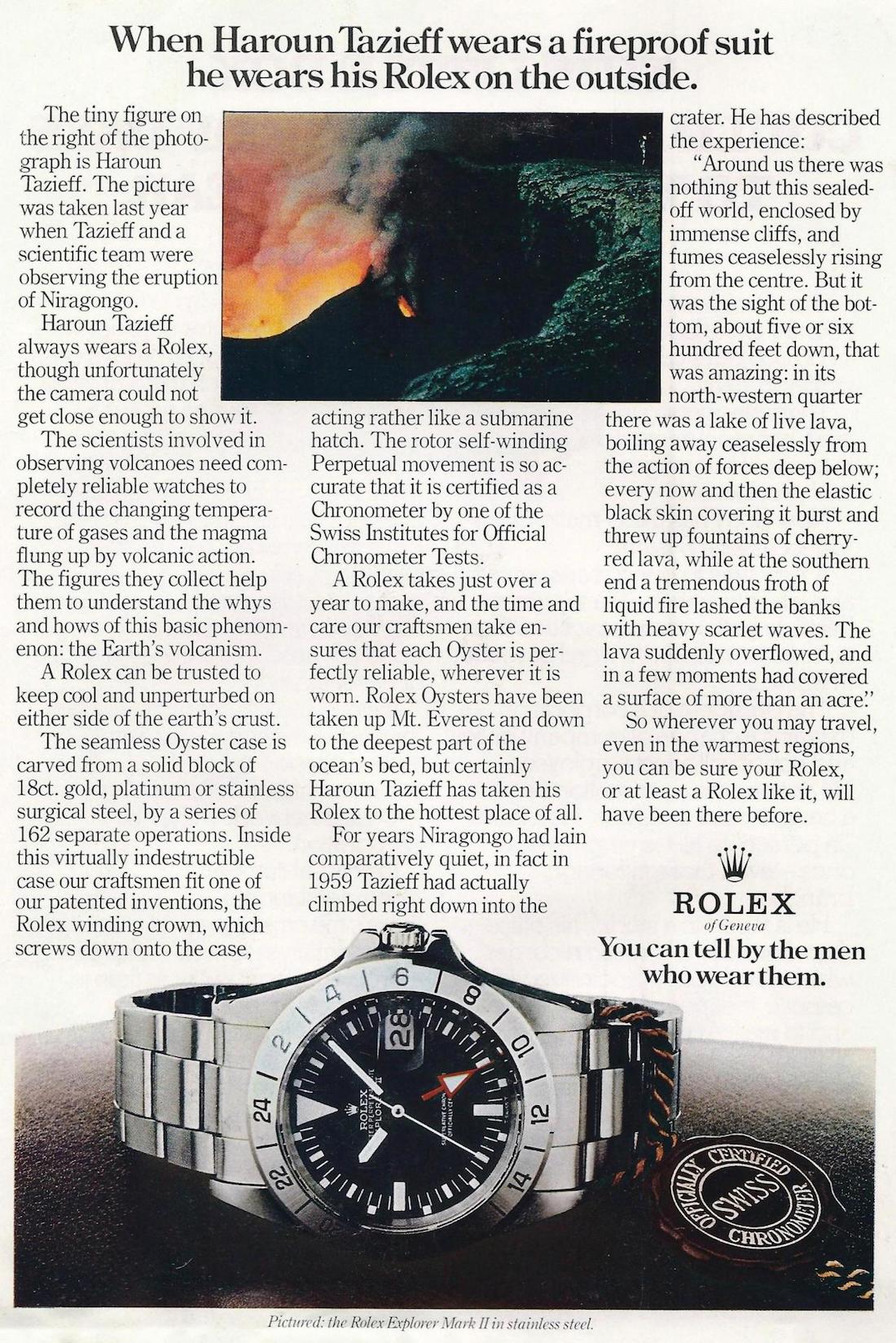
The history of the Explorer II spans across three references, beginning with the 1655. Unveiled in 1971, the 40mm wide Explorer II was designed for spelunkers who would use the bright orange 24-hour hand to determine whether it is AM or PM when they are in the pitch dark of the caverns they would be excavating. This model has gained a vintage following, acquiring the “Freccione” moniker (“freccia” meaning “arrow” in Italian) as well as the inaccurate “Steve McQueen” nickname that isn’t based in any real history of the man wearing an Explorer II (in fact, he wore the Submariner most often).
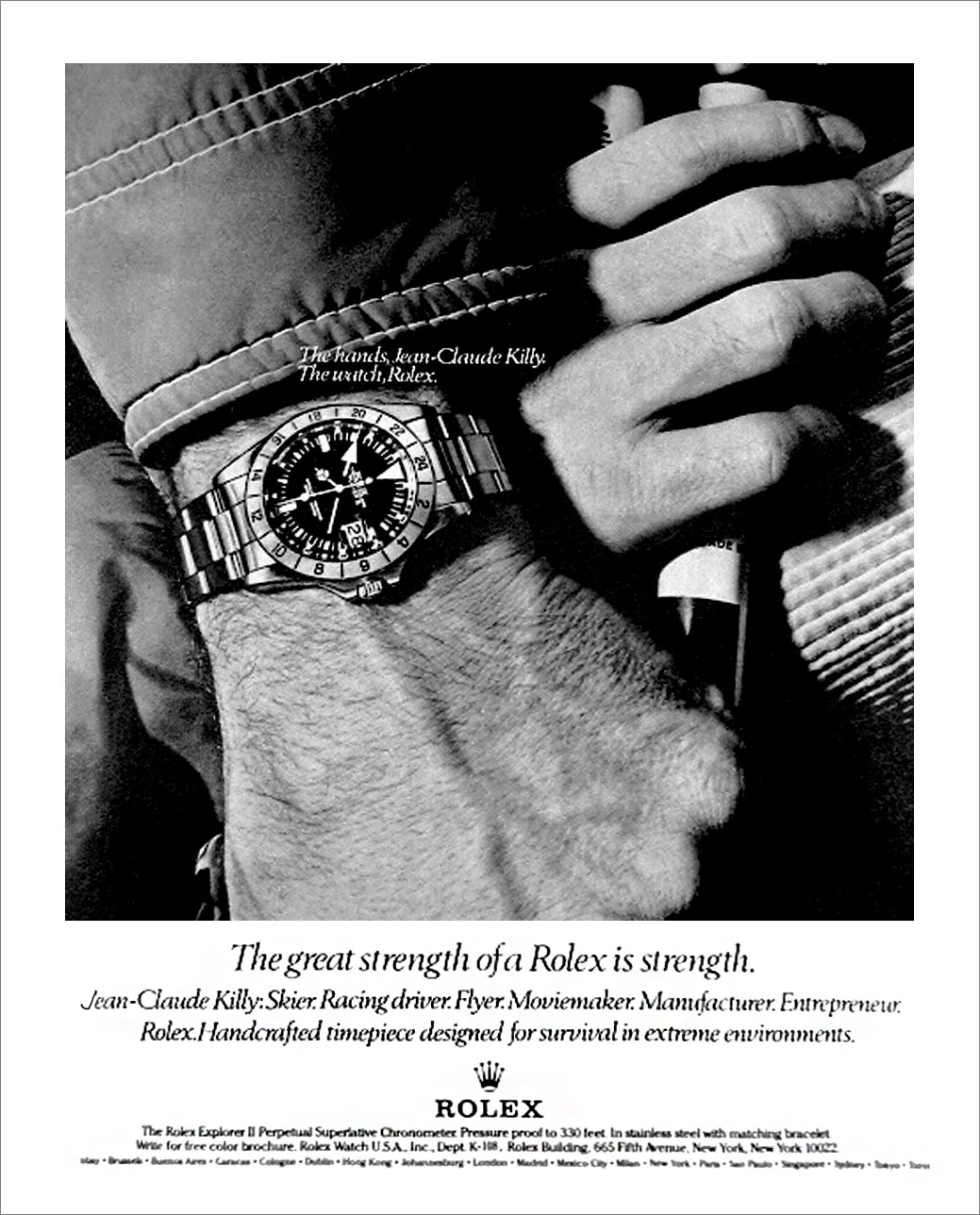
Jake’s Rolex World, the wonderful resource for all things Green Crown, looks at this historical mistake and explains that it was Olympic skier Jean-Claude Killy who wore the ref. 1655 Explorer II and was featured in several ads for the watch in the early 1970s.
In 1989 they updated the Explorer II with the Ref. 16570 that came in both a black and white dial, which are colorways that carry into present day. This version of the Explorer II was outfitted with the then-newer Caliber 3185 (and later caliber 3186) and was quite a different beast in terms of aesthetics as well with new hands, circular hour markers, triangles rather than lines used to separate the hour markers on the bezel, and most notably the replacement of the orange 24-hour hand with the standard red hand seen on the GMT Master. It did keep the 40mm case, however.

This Explorer II ad from the mid 1990s stood out as there is something incredibly secure and confident about having an ad for this watch featuring a woman.
This generation of the Explorer II reference 16570 is likely my least favorite as it seems to be a half-measure, or the answer to a question nobody really asked. Perhaps it all comes down to that iconic, in-your-face orange 24-hour hand that I see as being so cool and unique amongst their collection. Although, I know a lot of people prefer the smaller 40mm size and if you’re looking for a Rolex sports watch but don’t want to pay the $7,500+ for a contemporary Submariner or Explorer II, then these previous generation models present a compelling value proposition. There are plenty of great options for one of these ref. 16570 watches out there that are safely in the low $5,000 mark.
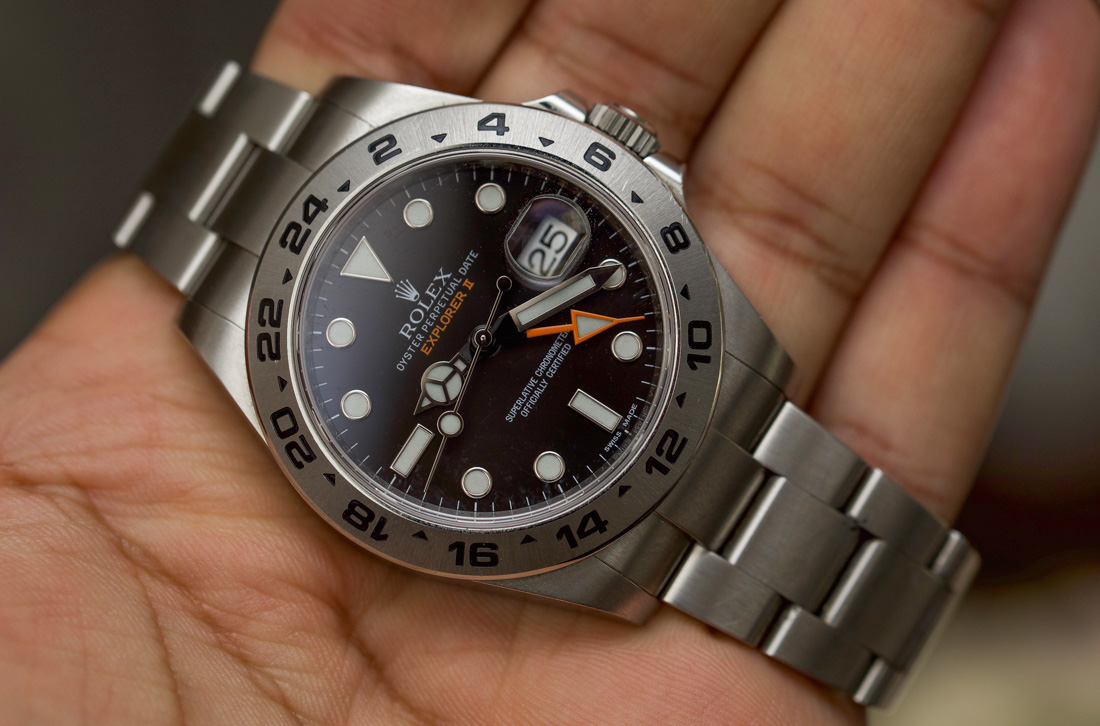
Fortunately, for the 40th anniversary of the Explorer II, they introduced the Ref. 216570 in 2011. Available in a black or white “polar” dial, this most recent Explorer II is the crown’s sports watch that won me over. With the contemporary 42mm case, return of the orange 24-hour hand, large hands, and no-fuss steel bezel in a world of ceramic, I am a huge fan of this Explorer II. It’s not for everyone, but in a world where every other person has a Submariner, Daytona, or Royal Oak on their wrist, that’s not necessarily a bad thing.

